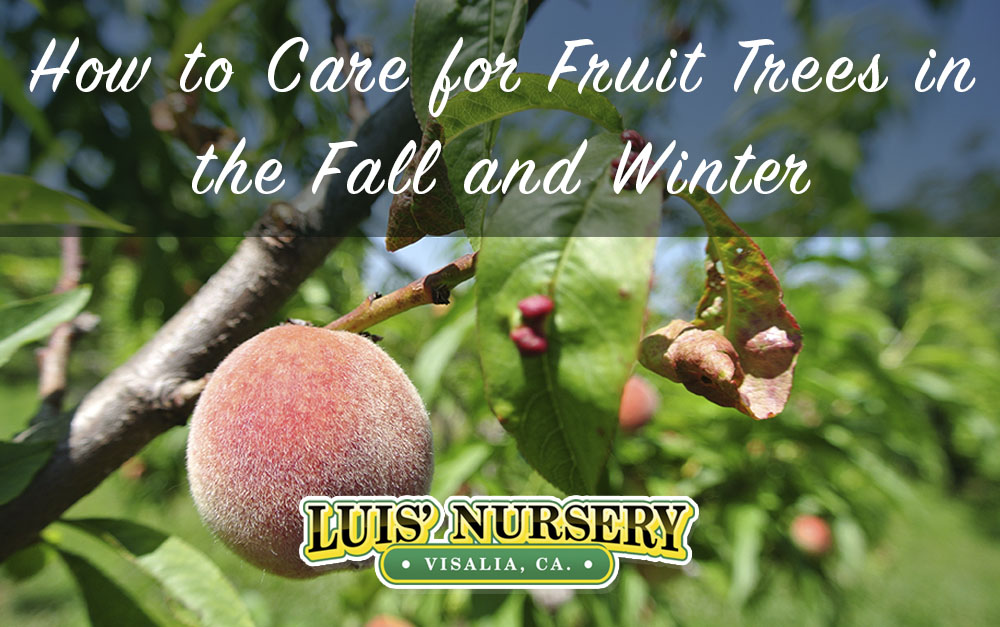As the weather changes from summer to fall, then to winter, it’s important to take the right steps to care for your fruit trees. Fall the optimal season to look after the health of, and to care for your fruit trees. We’ve compiled some tips to help you along the way.
Preparing your trees for Fall
- Rake up fallen leaves – Take the time to gather and remove fallen leaves to prevent leaf-borne diseases and reduce mice habitats.
- Water trees well once leaves have fallen – It’s important to not encourage growth before the dormancy period, so wait until the leaves have fallen to water. Saturate the soil at least 2 feet deep, and this will help to encourage root growth.
- Control Insects – Avoid canker worms and tent caterpillars next Spring by applying tanglefoot to the tree trunk to repel moths. Remove any caterpillar egg bands on twigs that you notice.
- Remove overripe fruit – Overripe fruit is prone to rot and will attract wasps and racoons and can be too heavy and cause broken branches.
- Protect your branch spurs – Use a pole picker or orchard ladder to pick fruit instead of climbing through the tree. Your young spurs will be producing next year’s fruit and need to be protected from damage.
- Check for leaners – Check your staked trees for any that need to be fixed. Leaners can make the trees vulnerable during a storm.
- Protect from sunscald – Paint or wrap lower trunks or install tree guards to protect frozen roots from being burned by a harsh winter sun.
- Prune when dormant – Take the time to prune dormant deciduous fruit trees, and trim hedges, shrubs, and trees. You will want to remove dead or decayed branches but be careful to avoid pruning frost-damaged plants. Damaged parts of the plant protect the plant during any future frosts. Shrubs and trees that bloom on new growth should be pruned in the winter and early spring, while those that bloom on old growth should be pruned in late spring or summer (after their flowers fade).
- Apply Liqui-Cop – Apply liqui-cop and horticultural oil to fruit trees once they start to lose their leaves, then once a month until pink buds come out in spring. You only need to do this on your stonefruit and deciduous fruit trees.
Preparing your trees for Winter
- Apply mulch – Keep an eye on the weather and apply a layer of mulch about 4 to 6 inches deep around young or shallow rooted fruit trees. This mulch will protect your root systems from a hard freeze.
- Insulate your potted fruit trees – Potted fruit trees are even more vulnerable to winter damage. Wrap chicken wire around your pot and leave about 6 inches of space and stuff straw into the space between the pot and the wire. You can remove this in the spring, but for now it will act as an insulator. In the spring it will be repurposed as mulch when it decomposes.
- Plant New Trees – Winter can be a good time to plant new fruit trees. Take into consideration the type of soil, amount of sunlight and your growing space as you’re deciding what to plant. Also keep in mind if it needs a partner tree for pollination.
Taking the time to properly maintain and prepare your trees for the changing seasons will increase your yield and help them to provide a bountiful harvest. If you have any questions, we would be happy to help you get them answered!

